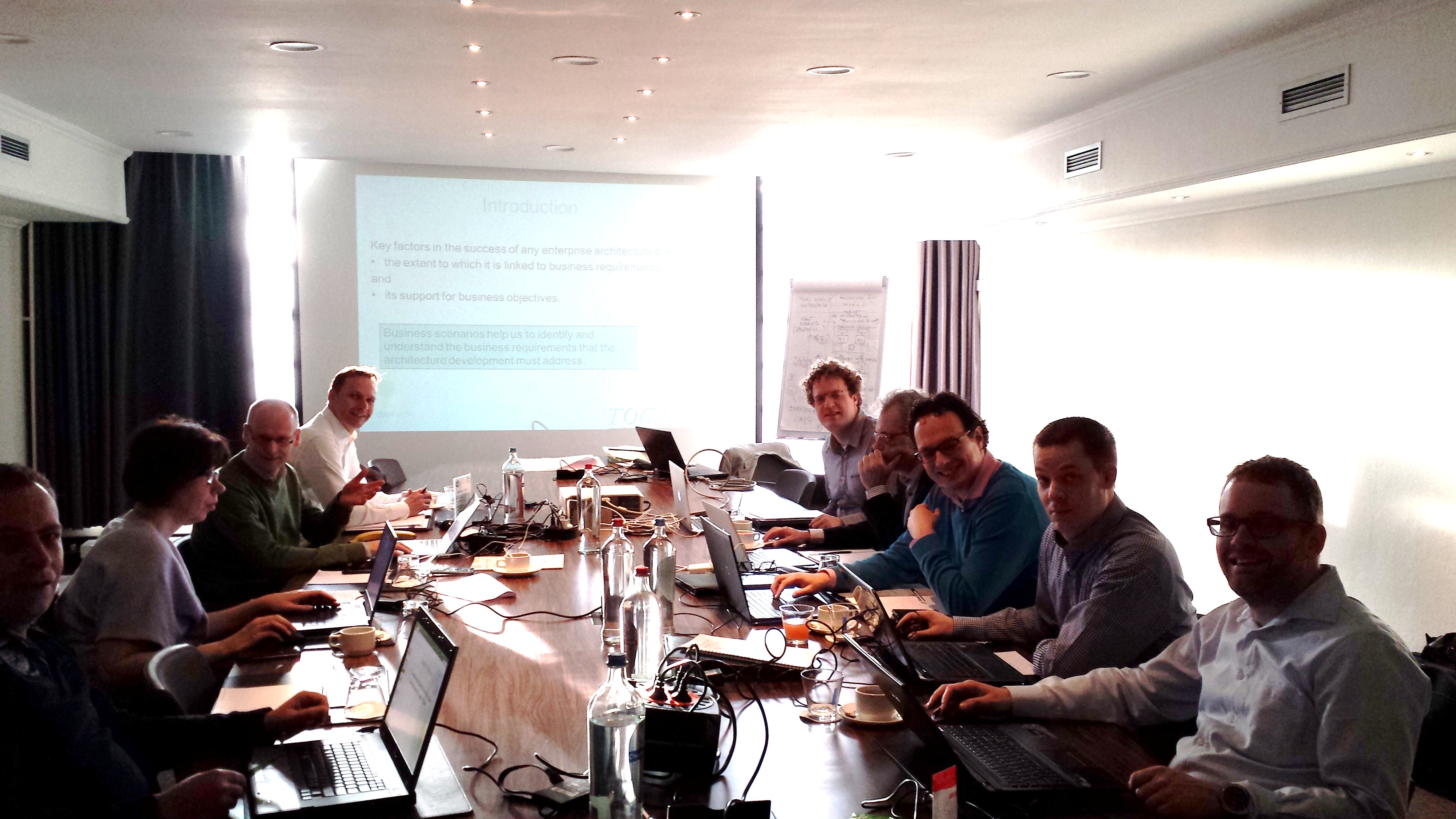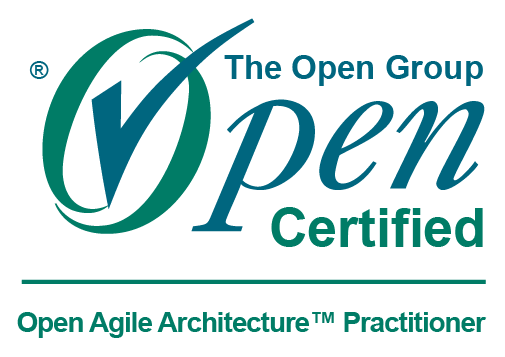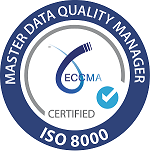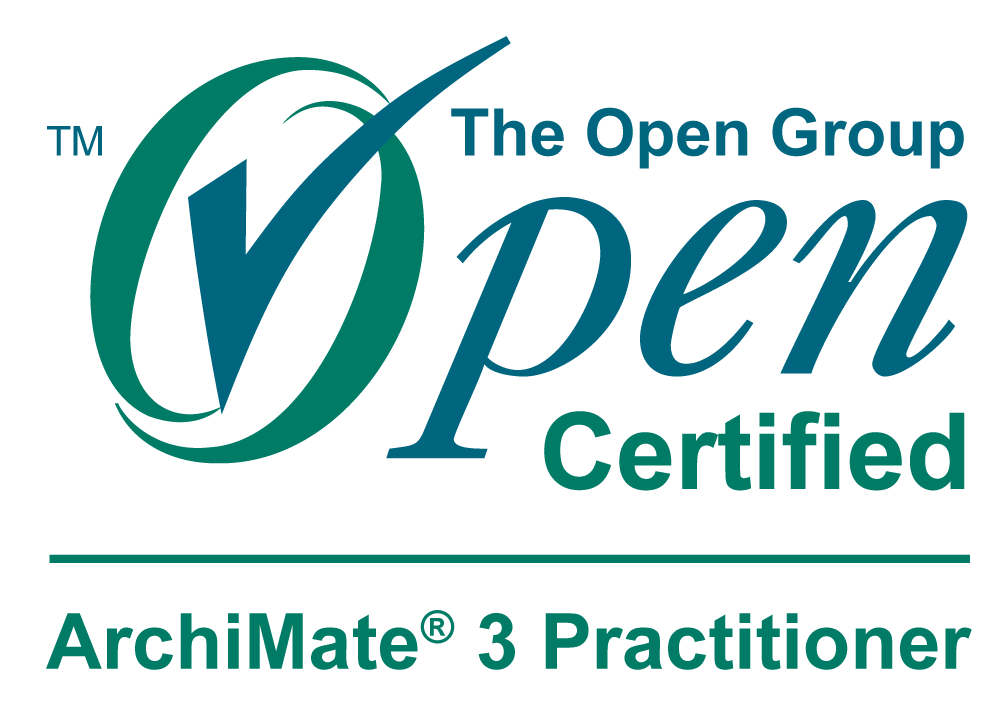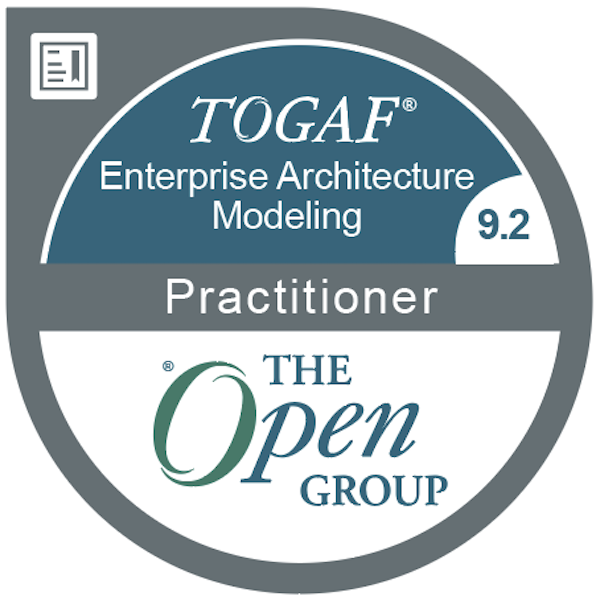NATO NAF v4 - Aligning Model-Based Systems to 'Desired Effects'
Aligning Physical Resources (human, material and software systems) with the Enterprise Vision, Strategies, Values and Capabilities
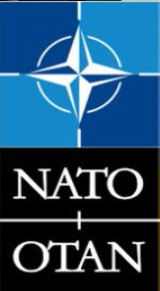
![]() 'NATO NAF v4' is a recent Architecture Framework standard designed to develop and describe architectures for both military and business sides.
'NATO NAF v4' is a recent Architecture Framework standard designed to develop and describe architectures for both military and business sides.
This new version of the NAF is based on the OMG's UAF Domain Meta-Model (DMM) and the Open Group's ArchiMate 3 MetaModels.
We particularly emphasize below on the alignment of Organization Capabilities, Services, Operations, Personnel and Physical System Resources to the Vision, Goals and Strategies as such an alignment becomes facilitated by the new NAF v4 Grid of viewpoints depicted in figure 1 below.
Indeed, NAF v4 brings a well-defined 'grid structure' to align viewpoints from Enterprises Vision, Strategies / Capabilities until Physical Resources. The grid also helps de-risks procurement and enables modular, faster technology insertion and ensures interoperability between different systems through the NATO's Federated Mission Network (FMN) which is the primary goal of the NAF v4.
While its Subjects of Concern (rows of the grid) focus on different domains from Vision and Capabilities to Physical Systems, its Aspects of Concern (columns of the grid) emphasize on Structural and Behavioral dimensions of architecture elements including their Connectivity, Information Exchange, Constraints and the Roadmap to align underlying subjects.
The behavioral aspects of concern - columns in the middle of the grid contain three aspects namely : Processes, States and Sequences. You can use any of them to define views related to the behavioral specifications of your architecture depending on the context brought by the needs of your stakeholders.
In such a perspective, aligning Process and Sequence views and other ones to 'Desired Effects/States' will help you to avoid wastes in struggling with unnecessary (no productive) modeling.
On the other hand, directing Strategies and Capabilities of the 'Concepts Layer' being based on Desired Effects also help to better align Services, Processes until Roles and Resources of the logical and physical layers.
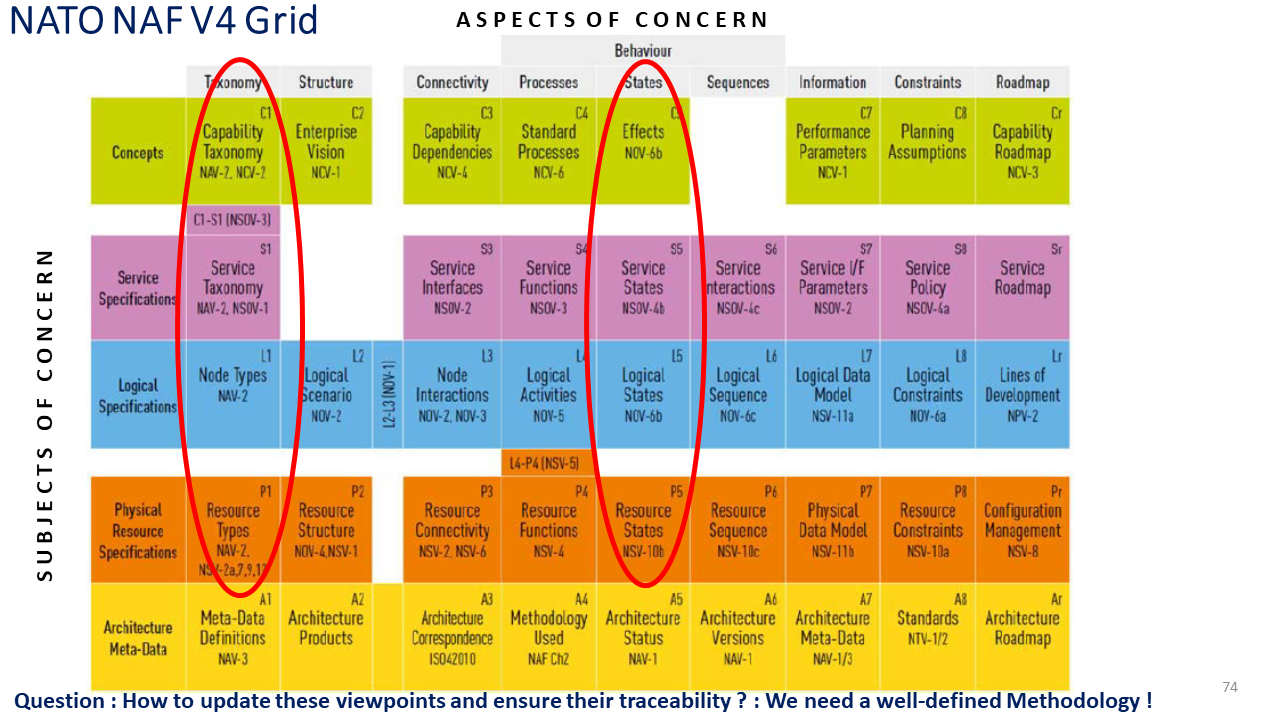
Figure 1 - The NATO NAF v4 Grid of Architecture Viewpoints
Notice that the 'Architecture Meta-Data' has been renamed to 'Architecture Foundation' and the S2- Service Structure Viewpoint has been added to the grid ; some other minor changes occurred in the 2020.07 document of NAF v4 Grid as indicated below.
Architecture Methodology to feed the NAF v4 Views
NAF v4 defines Methodological Stages similar to TOGAF's ADM phases ; however 'NAF Architecting Stages' do not focus on the sequence in which viewpoints should efficiently be used to ensure an 'architectural coherence' facing changes and saving time in populating the grid :
https://www.nato.int/nato_static_fl2014/assets/pdf/2021/1/pdf/NAFv4_2020.09.pdf
The figure below shows the Architecting Stages of the NAF V4 Methodology by focusing on its central entity "Manage Architecture Motivation Data'.
The latter makes reference to the OMG's Business Motivation Model (BMM) standard to Manage the Architecture Motivation Data such as Vision, Goals, Influencers (Drivers), Policies and Rules, ... that set the context of 'process adaptation' to major architecture drivers such as interoperability.
Through architecture drivers, the goal of NAFv4 is to eliminate operational stovepipes and ensure that data from a satellite, a naval destroyer, and a dismounted soldier can be fused into a single, actionable picture for commanders notably by integrating NATO's Federated Mission Network (FMN) Spirals following a clear and traceable path.
In the case of the SAR operations described below using Sparx EA, the goal would be to ensure the physical interoperability of the search nodes, the asset controller, the rescue nodes, etc., starting with Strategy to Desired Effect and Rules, then to Service Design until Implementation through the NAF v4 grid of viewpoints.
Thus, the entire grid of viewpoints are guided by the Architecture Motivation Data Elements indicated in blue on the left.

Figure 2 - The NATO NAF v4 - Architecting Stages orchestrated by the Architecture Motivation Data Elements
While being inspired by TOGAF ADM Cycle, the 'Managing Architecture Motivation Data' Entity in the center helps not only to set the context of 'process adaptation' to major architecture drivers - it also helps to adjust strategies and align underlying views based on data feedbacks (cf figure 6.3 and figure 9) that enable a 'plug-and-fight' capability where new systems can be integrated rapidly and reliably into an actionable digital picture.
Architecture Enabled Engineering : Aligning the NAF v4 Viewpoints to Desired Effects / Lessons learned
To provide decision-makers with timely and accurate information using the elements of the architecture, NAF v4 assists you with its "State" and "Information" aspects of the grid to align different architecture viewpoints to Desired Effects (cf.figure 1).
Below you will find some shortcuts to avoid wastes in elaborating no-productive or potentially redundant views in such an alignment :
- First, focus on the Motivational Elements (Vision, goals, … until requirements) using the Vision, Desired Effects, and Constraints (C2, C5, C8) views as well as the target Service taxonomy (S1), Service States (S5) and Service Constraints (S8) views that will provide you respectively with the needed capabilities for Desired Effects and underlying services.
- Then to understand how your existing “Capabilities” and Services need to evolve, prepare a Taxonomy of Capabilities (C1) and Services (S1) views of your existing system (baseline architecture),
- Now, you are ready to realize "Desired Effects" that your organization would like to achieve through the “C5 – Effects” view and analyze impacts from Capabilities till the Physical Resource (P1 to P8) views.
In particular, 'effects' targeted by the C5 view will guide you to focusing directly on the behavioral aspects of the system such as (S4) and (S6) (respectively Service Functions and Interactions) views that need to be clarified for a given "target state" to reach.
Therefore all other underlying Logical and Physical Resource views located within these two behavioral aspects will be aligned to the "S4" and "S6" service views to ensure coherence through the Conceptual, Logical and Physical Data (S7, L7 and P7) views.
Some complementary recommendations to ensure Architectural Coherence
The figure below depicts the 'Motivational Alignment' of the NAF v4 grid views based on the Motivation Data Elements (cf. figure 2) that are summarized using ArchiMate langage notations (from Drivers, Assessments and Goals until Constraints) on the right.
Being fueled by such a 'Motivational Data', the two small arrows depicted on the left of the NAF grid that are originated from "Desired States/Effects " indicate aspects of Capabilities, Services and underlying Logical and Physical Resource views that need to be aligned with these target "States or Effects" to reach.
Such a 'Strategic alignment' aims to ensure not only the coherence of the Architecture Building Blocks vertically ; but it does also contribute to populate the grid through appropriate views being aligned to these desired states (Horizontal Coherence) through subjects of concern...

Figure 3 - Correspondences between NAF V4 Grid and ArchiMate Layers aligned with the Business Motivation Aspect depicted on the right
Tips to ensure the Strategic Alignment
Tip 1 : The alignment of the subjects of concerns (horizontal layers) of the grid with 'Desired Effects' that your organization would like to achieve aims to provide decision makers with accurate information collected through these layers and serve in realizing a dynamic "gap analysis" between existing and target desired states.
Therefore, it does not only assist you initially in preparing the roadmap of incremental capabilities using the capability roadmap (Cr) view but also helps in adjusting them through 'desired effect based data' that need to be collected from layers (cf. the Data-Driven Strategic Alignment using the NAF v4 schema depicted in figure 9).
Tip 2 : The gap analysis helps to fragment capabilities into 2nd or 3rd level granularities to ensure traceability using the C1-S1 (Capability to Service Mapping ) view to match the reality of "units of works" of services that need to be provided to their user/consumers.
Tip 3 : In addition, expressing both capabilities and services being based on 'Desired Effects' and aligning physical functions based on logical activities through the (L4-P4) bridge viewpoint helps to ensure alignment of physical resources to evolution of strategies due to changes on drivers.
An excerpt from some of these views referenced within NAF v4 Grid are provided below from the Strategic (Concept) Viewpoint to the Resources Viewpoint with an alignment being based on the Architecture Motivation Data (outlined in Figure 2 above).
Such an alignment allows you to update elements of the architecture in coherence according to 'Desired Effects' you want to achieve for your Organization and System Architectures.
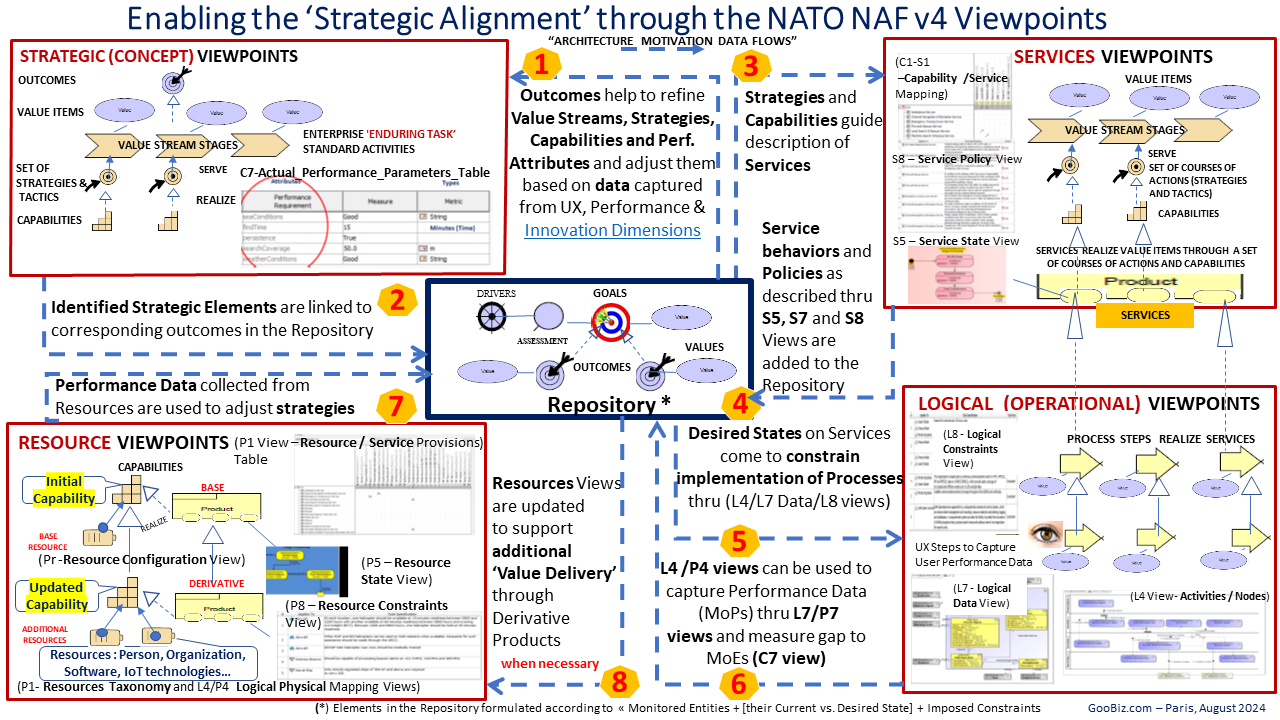
Figure 4 - Orchestration of NAF v4 Views from Strategies till Resource Configurations based on the Architecture Motivation Data (only a subset of elements are depicted in the middle of the figure)- cf fig.2 for other ones
The Strategic Alignment Summary on an example using ArchiMate on Sparx EA tool
The following example is about the SAR 'Search and Rescue Operations' conducted on Land and Sea by the Search and Rescue Teams.
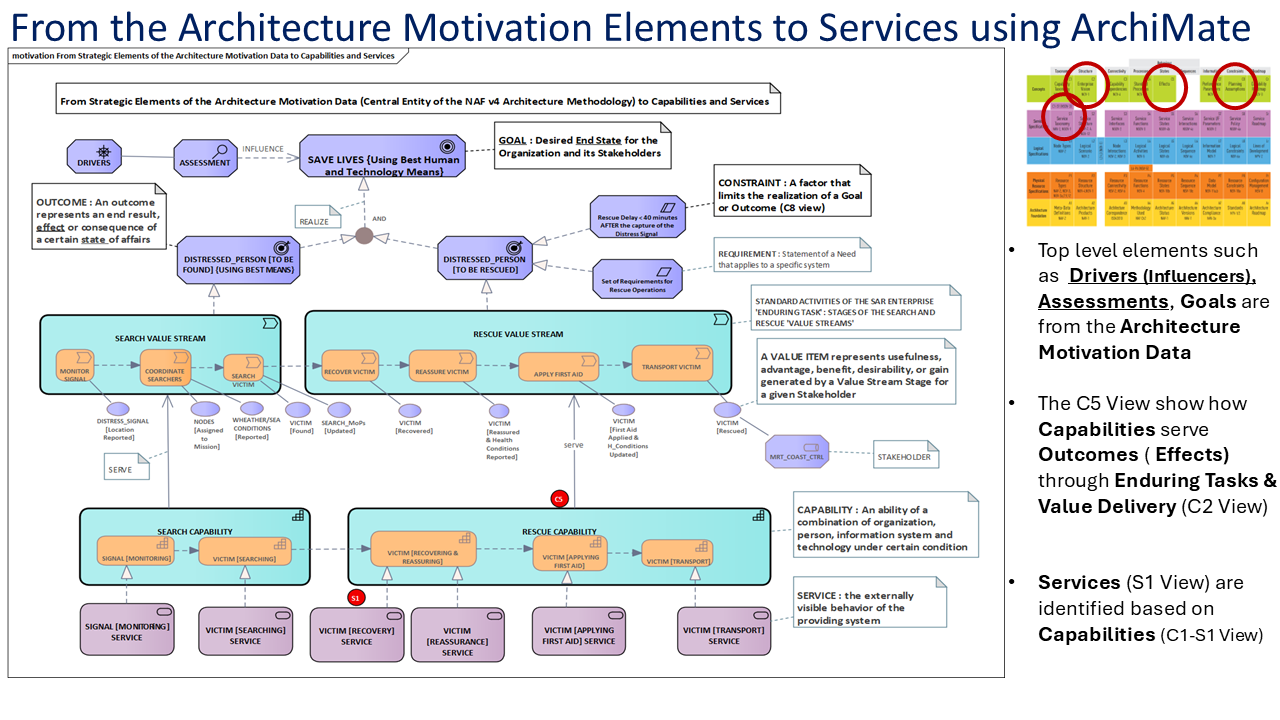
Figure 5.1 - From the Architecture Motivation Data to C2-Enterprise Vision View till Values to deliver and Services
Such an alignment needs to be continued until the Physical Resource Layer of the grid.... cf. :"NATO NAF v4" Training using ArchiMate on Sparx EA. training
The Strategic Alignment using the NATO NAF v4 Sparx Plug-in developed by German and Swiss Armies
Only some key views of the NAF v4 grid are presented below - complementary views to support an end-to-end alignment are provided in the following training course :
https://www.goobiz.com/NATO-Architecture-Framework-NAFv4.html
The first figure gives an example of the C2-Enterprise Vision View till Values to be delivered by the Enduring tasks - i.e "what the SAR enterprise does".
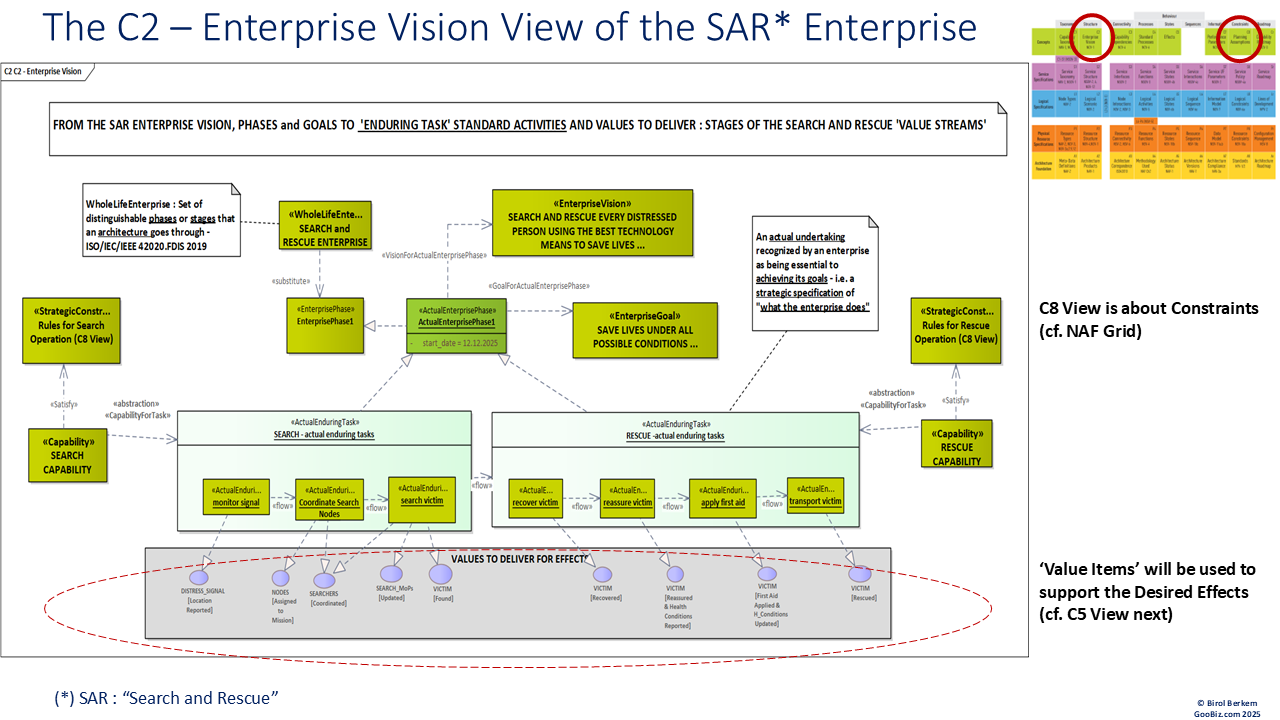
Figure 5.2 - The C2-Enterprise Vision View from the Enterprise Vision down to Values delivered by the Enduring Tasks
On the basis of Values that need to be delivered, we focus below on the alignment of the Search Capability through the C5 - Desired Effects View.
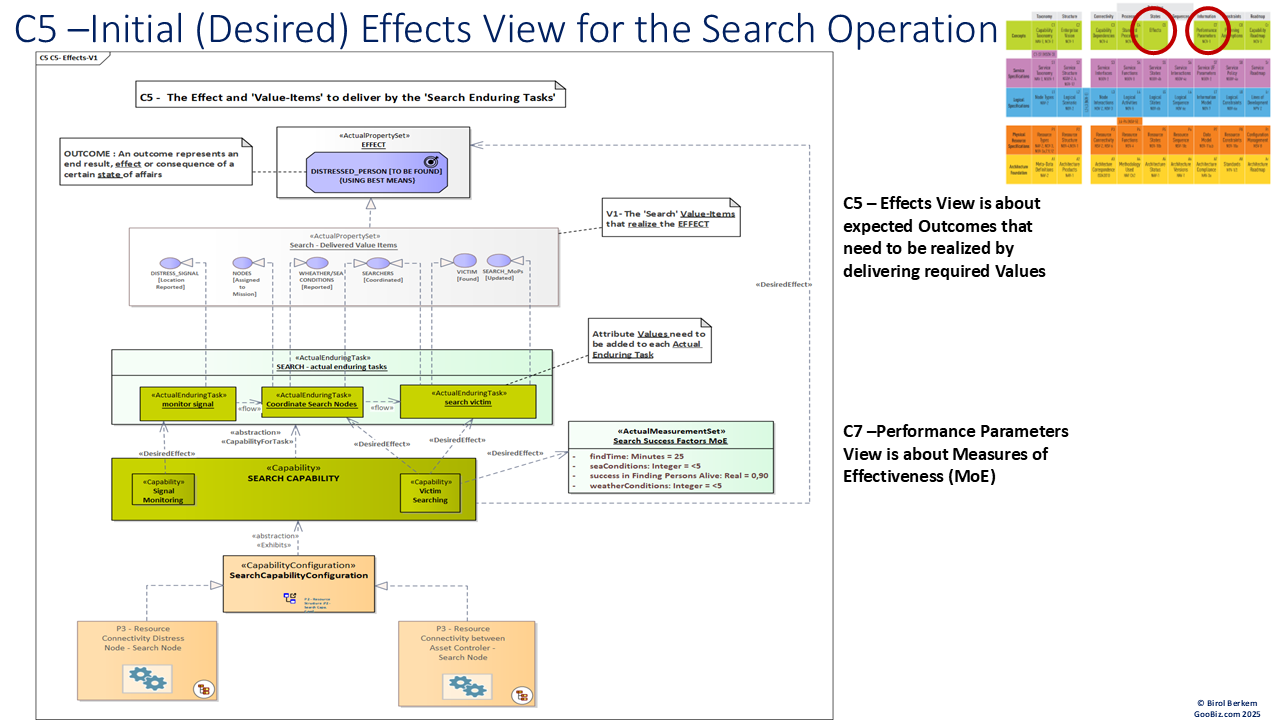
Figure 6.1 - The Initial C5-Effects View for the Search Activity with Values to deliver by the Enduring Tasks, related Capabilities and MoEs
In addition to elements of the NAF v4 metamodel, specifying ArchiMate's "values" becomes essential as these enable a better understanding of how strategic effects to which they directly contribute should be realized, updated and tested effectively in order to ensure more decisive and faster "sensor-shooter" systems of systems, particularly in the context of FMN integration.
In this perspective, the figure 6.3 below depicts how such a list of Values could be updated based on 'Data' captured at the Physical Resource layer through P1 and P3 views and their impacts on the Enduring Tasks.
Also see figure 8 to appreciate how this helps to test 'ports of capability configurations' that are allocated to realize corresponding values of the 'desired effect'.
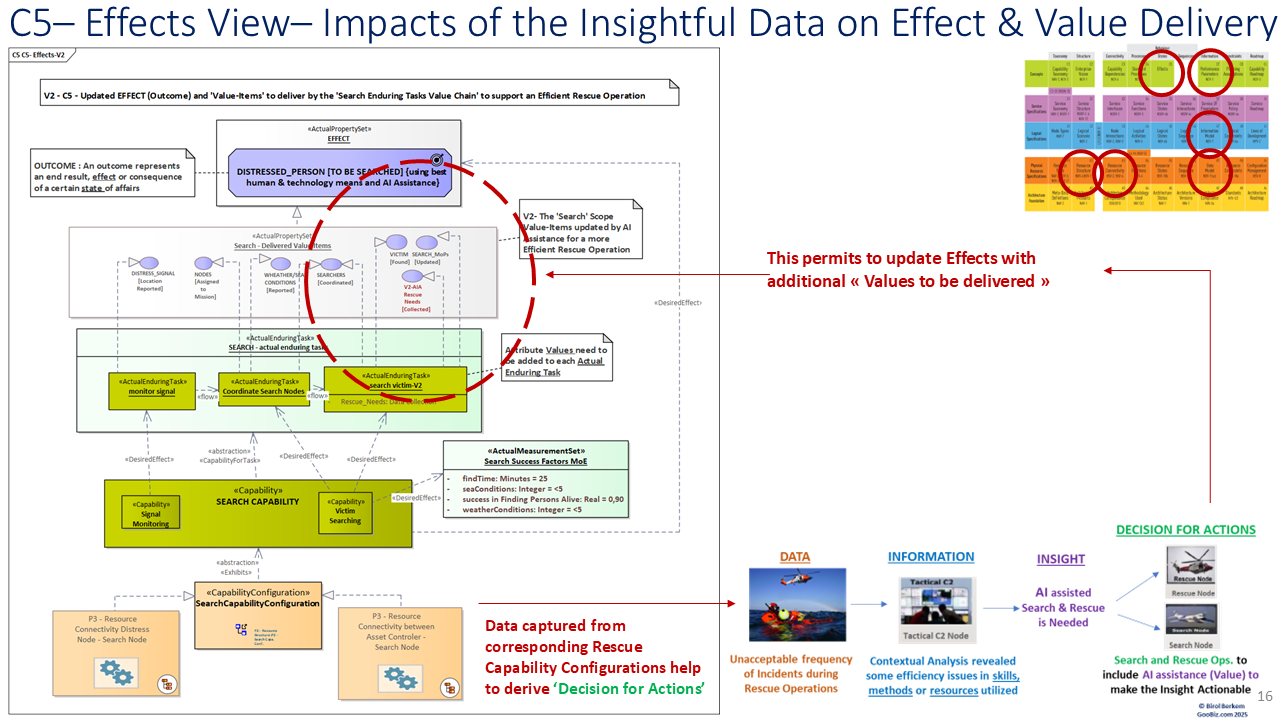
Figure 6.3 - A second version of the C5-Effects View with an additional Value-Item and a new Enduring Task attribute based on Insight. Other impacts follow...
Now, in order to specify Resources needed as part of Capability Configurations, we need to determine first sub-activities of the Control Search Operational Activity using the L4 view below.
These sub-activities can be described using an Activity Diagram (cf. figure 7.2)
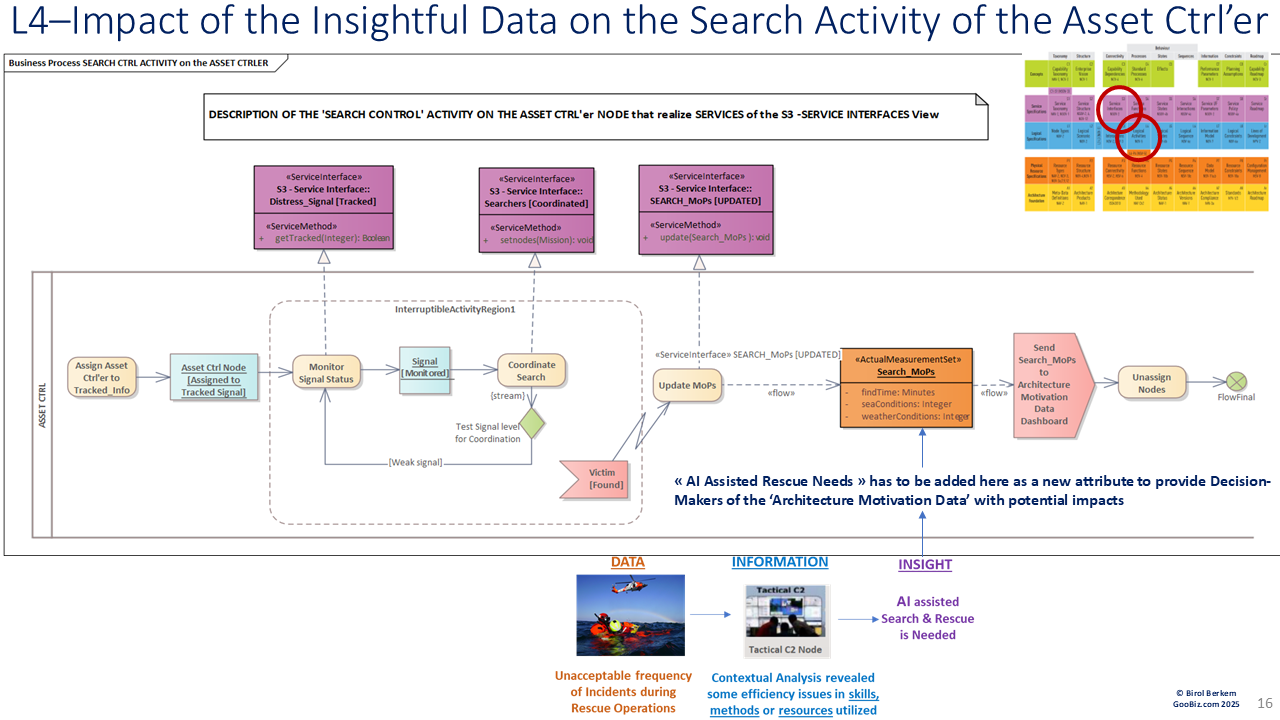
Figure 7.2 - The Measurement set 'Search MoPs' of the Control Search Activity needs to be updated with the "AI Assisted Rescue Needs"
On the basis of these sub-activities available under the L4-Control Search Activity, the corresponding P4 - Resource Functions can be described.
Resource Roles indicated on the left help to sequence the corresponding Resource Functions.
.png)
Figure 8 - The P3 - Resource Connectivity view of the Control Search Activity where ports of capability configurations are allocated to realize corresponding values that support the 'desired effect' (cf. figure 6.3).
This view also makes a reminder of Value-Items of Enduring Tasks that the Ports of Capability Configurations are allocated to deliver.
Summary
The figure below outlines a summary of high-level steps to align horizontally and vertically the Aspects of Concerns of the NAF V4 Grid to 'Desired Effects' being based on the BMM's 'Motivation Data' (Goals, Strategies, Policies, Rules - cf. Steps 1 and 2 below).
The Step 3 is about the necessary alignment of the Grid of Views to Desired Effects until the Physical Layer.
Finally Step 4 focuses on the data feed-backs such as the Measures of Performances (MoPs) collected from the Physical layer.
These Data Feed-backs need to be assessed by Step 5 to adjust strategies before initiating a new alignment cycle of the Architecture Views of the Grid (through a new sequence of Steps 2,3 and 4).
Such an adjustment enables a 'plug-and-fight' capability where new systems can be integrated rapidly and reliably into the actionable digital picture.
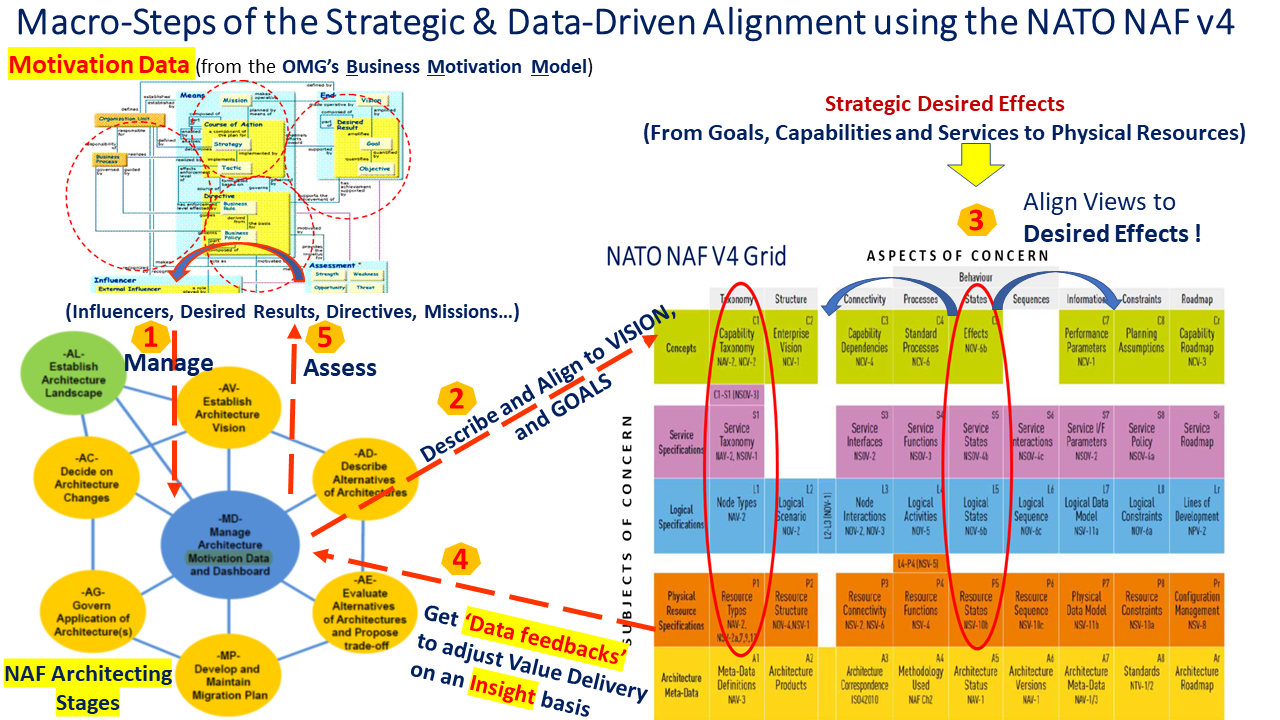
Figure 9 - Data-Driven Strategic Alignment using the NATO NAF v4 Architecting Stages and its Grid of Architecture Viewpoints
Complementary information about the NATO NAF v4 and the end-to-end alignment including "architecture enabled decision-making" are provided in the following training courses :
- Putting the NAF v4 into practice on an end-to-end case study using Cameo and Sparx tools (optionnaly using the Sparx NAF V4 Plug-in)
--
Last updated by Birol Berkem, Ph.D, January 2, 2026 - GooBiz, Paris

This work is licensed under a Creative Commons Attribution-ShareAlike 4.0 International License.
